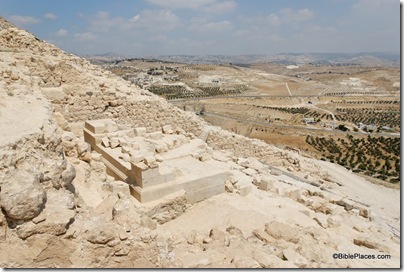I’ve been collecting items of interest over the past week:
Archaeologist Shimon Gibson claims that a concert near Jaffa Gate would damage antiquities (JPost).
A Christian organization in Colorado Springs is spending $2.3 million on a replica of the Western Wall, and a building to showcase it. 50 million tons of stone will be brought from Israel.
King Tut comes to Dallas on Friday.
The JPost Magazine has a profile of Eilat Mazar, currently excavating in the City of David. She says,
“I work with the Bible in one hand and the tools of excavation in the other. The Bible is the most important historical source.”
The ESV Study Bible, which was mentioned before here, is due out in a couple of weeks and its visual components (maps, charts, drawings) gets further explanation in an interview with Justin Taylor.
Leen Ritmeyer, renowned for his architectural work on the Temple Mount, is now offering some of his excellent work in affordable PowerPoint files.
I’ve just added Ferrell Jenkins’ Travel Blog to the blogroll.
This is not new, but I do not remember really recognizing all that is here before, so perhaps you did not either. The Archaeological Study Bible website has many dozens of photos, charts and maps (medium-resolution) available for download. You can find your way around from here, or go directly to Introduction, Old Testament, New Testament, or Maps.
David Padfield has photos of a Roman army enactment performed at Jerash. There are 15 free PowerPoint-size images.
If you’re an image junkie, you’ll save time downloading images from the last two sites if you have a download manager. (I use Free Download Manager with FlashGot on Firefox)
Shana tova (happy new year)!

